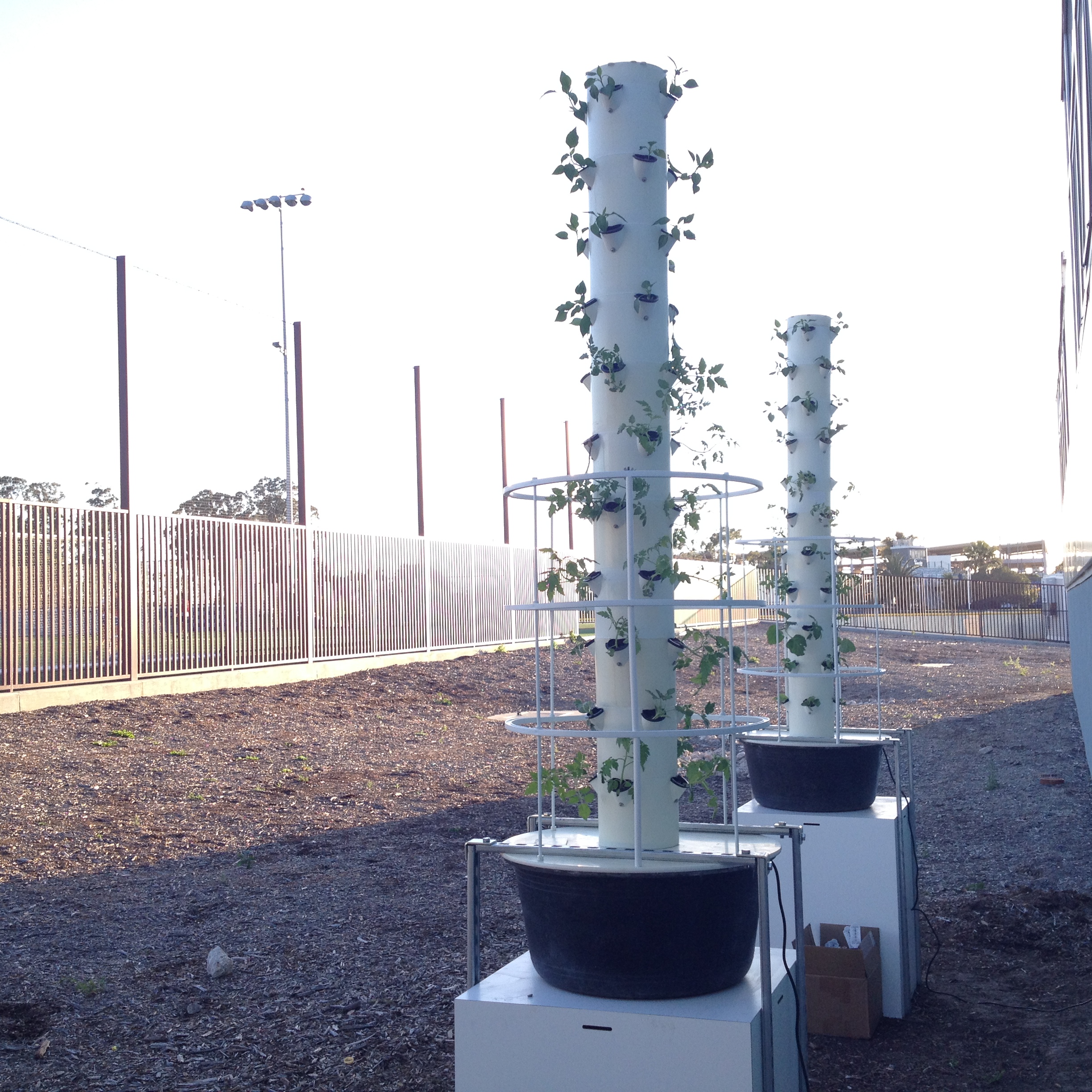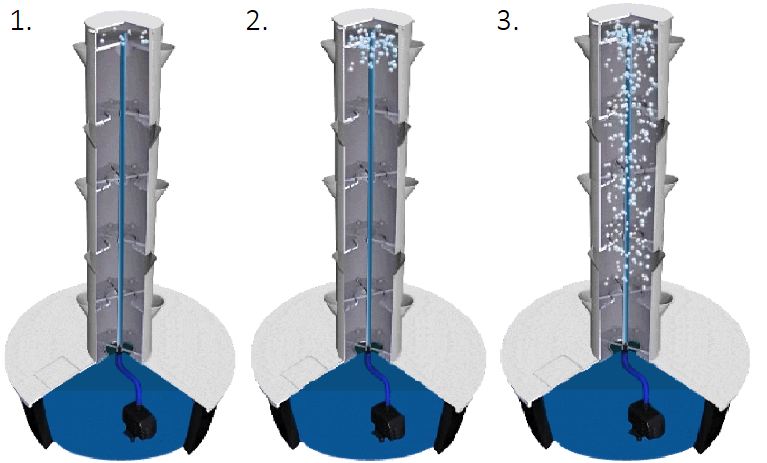Hydroponic Vertical Gardens

In Spring 2017, the Edible Campus Program launched our first hydroponic project. The towers are between the MAC gym and the soccer fields on campus.
The vertical gardens do not grow in soil and instead grow into the air where water is misted over them. Given the size of the water droplets, this is considered a “hydroponic” growing system as aeroponic systems would have smaller water droplets. Nutrients for the plants come from a mixture of compost tea, the liquid byproduct of worm composting, prepared by the Associated Students Department of Public Worms (AS DPW) and a commercially made nutrient mix.
Benefits of Hydroponic Systems
This hydroponic growing system reduces the amount of water, space, and energy used to grow produce. Hydroponic systems allow us to maximize space used while limiting resources used to sustain the growing process. We can use previously undesirable open space and instead use it as a garden to supply the UCSB community with fresh and healthy fruits and veggies.
Engineering Solutions

In order to ensure that pests cannot access the vertical gardens, we needed to either build an enclosure around the plants or raise the plants high enough of the ground that the pests can’t get to the gardens. Fencing around the vertical gardens gives us less of an ability to move the towers at a later date and due to the fact that it includes construction, would trigger a longer approval process. For these reasons, we decided to procure pedestals that the vertical gardens could be placed on top of. Unfortunately, we could not find a company that sold pedestals that could meet all of our safety, durability, and size requirements. We did, however, find a company, Pedestal Source, who was willing to make custom pedestals for us. The picture to the right is the engineering team who built our pedestal demonstrating that the pedestal can handle the 500lb weight requirement!
The Process of Water and Nutrient Circulation Through the Hydroponic Systems

1. Water and worm tea is pumped up through a tube from the 20-gallon reservoir.
2. The water and nutrients start to mist down into the plant roots.
3. The excess water and nutrients are recycled in the base of the reservoir.